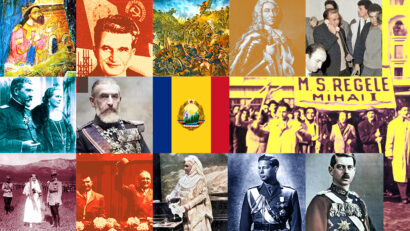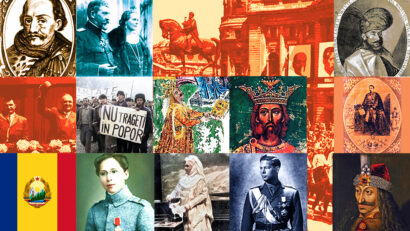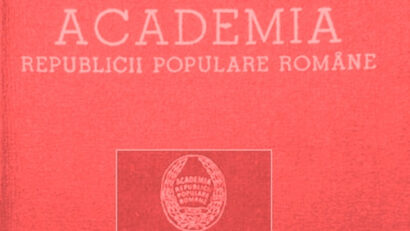Anti-epidemic measures in the Romanian regions
Epidemics or plagues have always altered the course of human history, causing sufferance and death.

Steliu Lambru, 19.10.2020, 14:00
Epidemics or plagues have always altered the course of human history, causing sufferance and death. People have fought against them the best way they could and, just like today, the methods that proved effective, circulated from one community to another. Solidarity was sometimes impressive, as it went beyond political and cultural borders and religious and racial differences. In the 19th century, lockdown, medicines and the tough measures imposed by the authorities led to the eradication of epidemics. In the wake of the industrial revolution the Romanian provinces were hardly hit by the bubonic plague, which mostly affected the urban areas. The measures taken by the authorities back then could be regarded today as repressive, but their result was a good.
Historian Sorin Grigoruta with the A. D. Xenopol History Institute in Iasi is the author of a book about bubonic plague and the way Romanians dealt with it: “Fully aware of the fact that crowds only enhance the risk of spreading the disease, the authorities took tough measures to limit social contact. Consequently, court hearings were suspended, schools, churches and coffee shops were closed down, trade was restricted just as the movement of people, especially at nighttime. In 1785, all coffee shops were closed down but coffee could still be sold to customers at the window. Going out in the streets at night was banned, because it was the time when the sick and the dead were taken out of the town. It wasn’t a pretty picture, so the authorities tried to diminish the emotional impact this could have had on the rest of the people.”
Isolation was another important tool to fight the bubonic plague. Sorin Goguta tells us more about it: “Isolating the infected households was another measure taken by the authorities. The first isolation measure involved keeping the sick indoors, a method applied not only in the Romanian principalities but also across Europe. There were cases when some of the family members infected survived and cases when the whole family died. A second isolation method involved taking all the family out and disinfecting the house. Disinfection could mean washing everything inside the house but also partially or totally demolishing the house, and setting it on fire.”
Nevertheless, quarantine or lockdown was the most efficient method to fight the plague. Ragusta port adopted the first European lockdown. All ships coming from the East were being kept outside the port for 40 days, before being let in. This solution was then adopted by other European cities and ports. On land, the Austrians had the best strategy, after the model of the military borders’ structure.
Sorin Grigoruta: “Without consciously targeting the element that caused the spread of the plagues, all measures regarding the isolation of the sick or of the people suspected of being infected, started to yield results. Consequently, the next step was to check and isolate for a number of days the people coming from areas affected by the plague, whether these areas were within the country or abroad. At the same time, a system of health letters developed, meant to prove that the traveler came from areas which were not affected by disease. This is how internal and external quarantines was put into place. Mentioned by internal documents, these isolation centers were opened on the spot at the access points to towns or in villages.”
Historian Delia Balaican with the Library of the Romanian Academy studied the typhus epidemic during WWI. She talked about the exceptional measures taken back then by the authorities: “A team of 150 engineers was tasked with building barracks for the isolation of the sick from the healthy. The barracks were made of wood, and were a type of campaign hospitals where military and civilians alike were committed, irrespective of age and sex. The rural population still lived in wet hovels with no light, where ventilation was impossible, so the number of sick people was very high. The authorities decided to take the sick people out of these hovels, disinfect their clothes and delouse them twice a week. The personal items that were not burnt were disinfected in huge ovens or in petrol or vinegar.”
Professor Calin Cotoi says that by imposing a lockdown in the Romanian principalities during the cholera epidemic in the 1830 strengthened the authority of the Romanian state: “The Romanian state imposed a lockdown on Prut River and also on the Danube. Lockdowns were very solid this time, but, once created, they entered a crisis. The Romanian state was highly dependent on trade with cereals which ensured its financing and living, and the strict lockdown was a threat to it. So there was always a tension between free trade and the threat of cholera. I believe Romania was created out of this dilemma.”
The anti-epidemic measures, although unpopular, saved the world at times of medical crisis. This shows that acting for the common good, often requires firmness and determination.





























